ALSO IN THIS ISSUE
Lyudmyla Baron, Head of Marketing Technology at PVH Corp. on powering global brands that drive fashion forward – for good.









Lyudmyla Baron, Head of Marketing Technology at PVH Corp. on powering global brands that drive fashion forward – for good.








We’re bringing you three insightful interviews with PVH Corp. (p6), Cytiva (p34) and Logitech (p64) this month, covering everything from the technology driving fashion forward and advancing the gene therapy field to how procurement can benefit society.
For our cover interview in this issue, I speak with Lyudmyla Baron from PVH Corp. for an enlightening chat about the company’s approach to deploying technology as an enabling force in its processes and service provision across its portfolio of global fashion brands, while also redefining the concept of customer loyalty programmes (p6).
I sit down with Emmanuelle Cameau from Cytiva to discuss how the global pharmaceutical company is transforming gene therapy through advanced approaches to technology, analytics and strategic partnerships with the ultimate goal of serving patients and driving down the costs of advanced genomic medicines (p34).
David Latten from Logitech tells us all about the company’s ‘Procurement with Purpose’ strategy and how he and his team approach their work and wield technology to drive value for the business, do more with less and implement procurement strategies that serve as an engine for global societal good (p64).

Our tech features this month explore the French car manufacturer looking to revolutionise the EV market (p24), the most exciting technology companies in the UK for 2023 (p52), an AI campaign for empowering dyslexic thinking backed by Richard Branson (p88) and a new frontier for tech recruiters (p80).
Wrapping things up, allow us to introduce you to Biolytica, the company behind an ultrapersonalised, AI-driven health data platform that is our startup of the month (p100).
We hope you enjoy our latest edition. As always, if you would like to be considered as an interviewee or if you have a story for us to contemplate including, please do get in touch.
Where next for recruitment in the tech sector?
6

We sit down with Lyudmyla Baron, Head of Marketing Technology at PVH Corp.
Affordability meets minimalism at this French EV startup

52
Our breakdown of the UK’s most exciting tech companies in 2023
64 tech
David Latten discusses procurement with purpose at Logitech
34
Emmanuelle Cameau on technology, analytics and strategic partnerships at Cytiva

100
Meet Biolytica, our startup of the month




88
How could AI benefit from the power of dyslexic thinking?

Lyudmyla Baron, Head of Marketing Technology at PVH Corp. discusses the fashion company’s innovative approaches to tech, data and redefining customer loyalty programmes.

ESTABLISHED IN 1881, PVH CORP. IS A LEADING FASHION COMPANY THAT CONNECTS WITH CUSTOMERS IN OVER 40 COUNTRIES. ITS GLOBAL BRANDS INCLUDE CALVIN KLEIN AND TOMMY HILFIGER AND IT IS COMMITTED TO DRIVING FASHION FORWARD FOR GOOD.
ut what does this look like from a technological and strategic perspective?
Here to tell us more is Lyudmyla Baron, the Head of Marketing Technology at PVH. She originally joined the company’s digital transformation department in its early days, which has since evolved into a digital product department.
Lyudmyla explains how before COVID hit PVH had
already made significant and exciting strides in technology development, positioning it well to pivot towards becoming a techfocused fashion company.
As an established legacy corporation, PVH now has a strong track record of deploying technology as an enabling force in its processes and service provision.
“I see modern technology as the driving force for process innovation and service provision as well
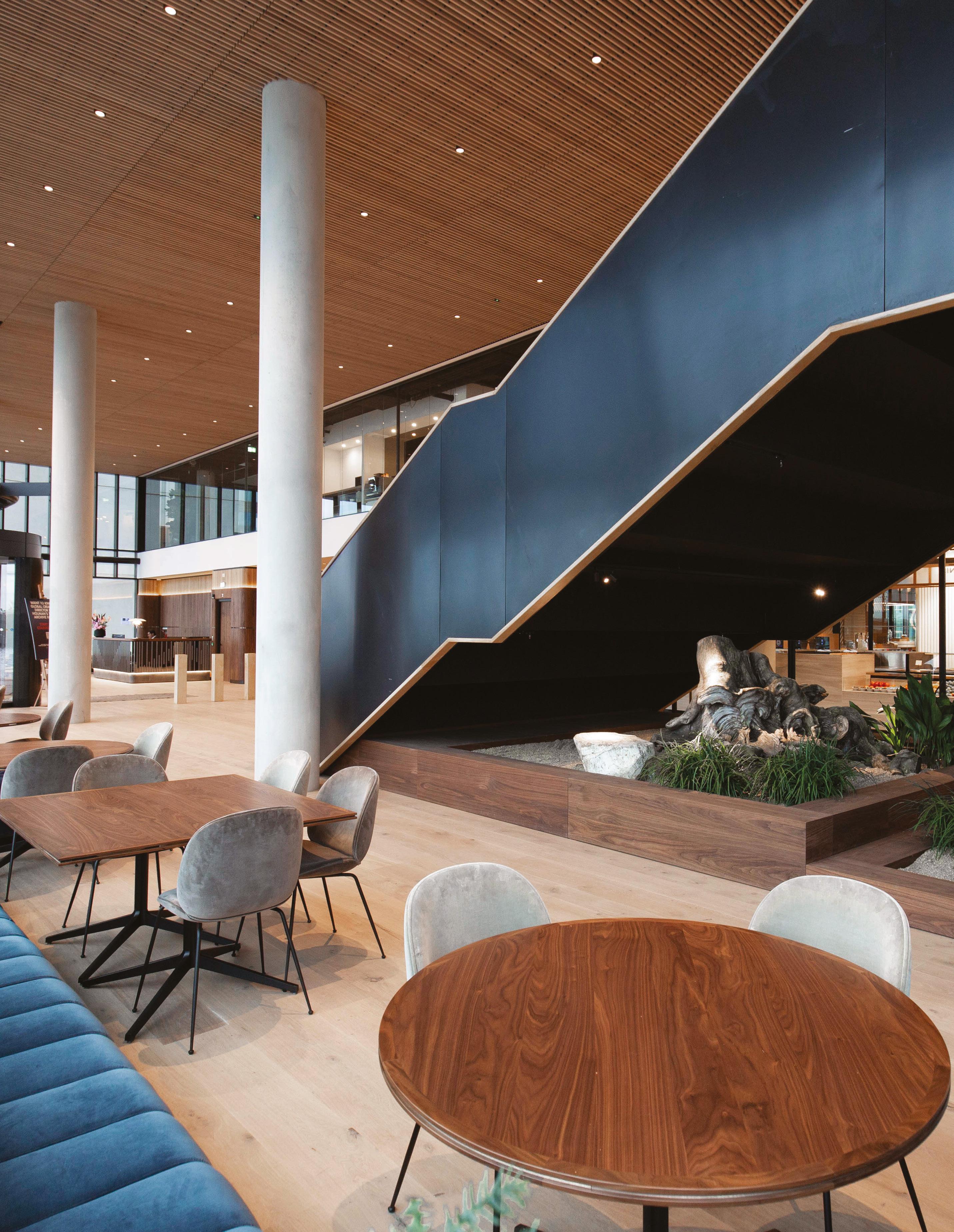

LYUDMYLA IS GRATEFUL TO HER COLLEAGUES JOSEMAR PEREZ (ABOVE) AND CLAIRE ROQUES (BELOW) FOR THEIR HARD WORK SETTING UP VALUABLE COLLABORATIONS WITH CREATIVE FORCE, REAKTOR AND OTHER EXCITING PROJECT PARTNERS.


because traditionally as a corporation with such a rich history, it’s common to have a lot of different technologies that span decades of development, improvement and evolution,” says Lyudmyla. “So by using newer technology while keeping the legacy systems up to date and also improving where we can with what becomes available on the market, we can channel the spirit of continuous improvement both of our technology and processes – it's a really strong combination.
“One example is our photo studios process where we have recently collaborated with Creative Force to update our process management. Our work together has allowed us to save costs by automating a lot of manual labour and introduce new methods of reporting and tracking the status of a process or a season campaign.”
Lyudmyla elaborates, “In a dynamic industry like ours, innovation is a key differentiator in the competitive environment. We have several dedicated

teams for innovation and my journey with PVH began in a Digital Hub at the intersection of digital transformation, technology and digital ventures. As a corporation, we have also incubated some exciting start-ups in the digital showroom and 3D design and selling fields. Those start-ups have now graduated from inside the corporation and have merged into their own entity, serving other brands with the capabilities that have been born inside our corporation.”
PVH Corp. maximises the outputs of its innovation and technology strategies by deploying data-driven decision-making.

“As a company, we strive to be data-driven and make informed decisions. It is one of the leadership behaviours that we promote at every level because we believe that everyone is a leader,” says Lyudmyla. “It is a top priority and we encourage each other to source
“PVH CORP. MAXIMISES THE OUTPUTS OF ITS INNOVATION AND TECHNOLOGY STRATEGIES BY DEPLOYING DATADRIVEN DECISION-MAKING”
relevant data accordingly. From a technology perspective, I'm in a good position to help stakeholders from various business teams to get the relevant data to ensure that our processes work so we have a good overview of what is happening in our systems across all the channels and all the touch points for the consumers but also inside our systems too.
“So from that perspective, for example, I help teams introduce monitoring techniques because it's hard to manage what we don’t know. First, it is about asking the right questions to gain more insights. This allows us to refine our monitoring capabilities to better answer the subsequent questions that we are asking.

Second, it is then a question of processing the relevant data that we collect and we have a dedicated department for data and business analytics that is working on our corporation’s data lake. This entails collaboration between a lot of departments to ensure that data flows throughout the company from consumerfacing touchpoints to the right teams because consumer data is paramount and it's crucial to ensure on every level that we meet security, legal and GDPR requirements for every new tool or software that we introduce. It's important to align the data
and make it accessible to the departments that could use it for data-driven decisions so that we can learn from our consumers and from our audience so we can serve their needs better.”
As she discusses the notion of security and legal requirements, Lyudmyla reinforces the ethical responsibility for business and tech leaders in particular.
in the next few years combined with the amount of automation and reduction of manual work that new tools on the market today already provide – I think these are very important topics to consider.”
But at PVH Corp. data is not only used in decision-making, it also underpins and drives software development as well.
“It's important to stay up to date on emerging trends and keep an eye on the big disruptive technologies because they impact every industry. Fashion is no exception,” says Lyudmyla. “In any business process that supports decision-making with analysis of large amounts of data, the new technology offers unprecedented capabilities for leadership in general. But it's important to know how the new developments are going to affect the workforce broadly speaking. The amount of upskilling that will be needed
Here Lyudmyla highlights the importance of partnerships in the operations at PVH Corp.
"We recently switched to Creative Force for the management of our overall studio processes which provided improvements such as sample tracking, variant asset naming and cropping, outfit creation, contact sheets and reporting – to name a few. Their enhanced reporting and tracking of the process show us all the modifications to data flows. This has enabled our teams to have a
“WE RECENTLY SWITCHED TO CREATIVE FORCE FOR THE MANAGEMENT OF OUR OVERALL STUDIO PROCESSES WHICH PROVIDED IMPROVEMENTS SUCH AS SAMPLE TRACKING, VARIANT ASSET NAMING AND CROPPING, OUTFIT CREATION, CONTACT SHEETS AND REPORTING – TO NAME A FEW”
comprehensive overview in one place of where the data is shared or modified, the status of those samples/assets, the data on models or crews and the metadata of the assets. So from that perspective the data that is now readily available and can serve us in making further improvements. Now it is possible to look at the entire flow of assets and identify where we could make
possible improvements in the future to streamline operations or increase quality or any other desirable performance metrics."
At its core, PVH is a brand builder and one of its growth drivers as a corporation is excelling with the best consumer engagement. It wields technology and digitally led strategies to innovate the customer

user experience. In particular, PVH prides itself on its innovative approach to loyalty programmes.
“So loyalty is a very important topic for us, and we've had very successful loyalty programmes for decades,” explains Lyudmyla. But the company is always looking to innovate and improve its offering. Lyudmyla draws attention to

exciting new projects underway like the Tommy Together initiative at Tommy Hilfiger in Europe which is currently live in Germany and Italy with other markets to follow soon.
“Tommy Together really focuses on engaging with the customers,” says Lyudmyla. “Classic loyalty programmes are very transactional and reward the higher spenders.
But for us, it's important to connect with consumers based on their values and not necessarily on the size of their wallets. We also see and appreciate that when the economy slows down or there is uncertainty in general, people shop for clothes less. But when they do, they shop with the brands that they feel a personal connection with and that align with their ethics. As a result, we try to reflect this and engage
development teams were able to develop and launch our backend capabilities in five months since they started working with us to the go-live date. For a programme and initiative that spans several departments and has omnichannel capabilities and touch points with the consumer, it's incredibly impressive.”
Beyond their loyalty programmes, PVH also strives to personalise
with our customers based on their values and enhance customer satisfaction through our loyalty programmes. For instance, we need to make sure that there is an ease of use within the products that we serve them. So if it's signing up for a loyalty programme, we also want to enhance the backend capabilities for any new or updated programme. And here we have collaborated with Reaktor whose way of working, speed and quality is a rare combination that you don't find very often. But we are happy that we have found it in our partner Reaktor, whose
their consumer engagement strategies to enhance its service provision for its customers at a grassroots level with the content the company distributes.
“One of the drivers of global growth is the balance in standardisation and personalisation of content, but also for our processes and strategies,” reiterates Lyudmyla.
“One example of that is how different departments or markets can use systems or technologies that work better for them to meet their needs while also better
“REAKTOR WHOSE WAY OF WORKING, SPEED AND QUALITY IS A RARE COMBINATION THAT YOU DON'T FIND VERY OFTEN. BUT WE ARE HAPPY THAT WE HAVE FOUND IT IN OUR PARTNER REAKTOR”


serving the consumers they engage with.
“For instance, we use Bloomreach as one of our preferred content management systems (CMS) to help us deploy our digital assets effectively in a way that resonates with our target audiences. We're making waves in the digital arena thanks to the dedicated work of

our content teams and advanced solutions like the one provided by Bloomreach. Moreover, since the COVID lockdowns ended it has been a pleasure being able to collaborate with strategic partners again face to face, beyond the realms of virtual meetings, sparkling inspiration and toasting to new ideas on Amsterdam’s canals.”
“WE'RE MAKING WAVES IN THE DIGITAL ARENA THANKS TO THE DEDICATED WORK OF OUR CONTENT TEAMS AND ADVANCED SOLUTIONS LIKE THE ONE PROVIDED BY BLOOMREACH”
For Lyudmyla, she emphasises the importance of sustainability and using PVH’s scale as an empowering force for other representatives in the fashion industry.
“So one of the big goals that is close to my heart and fundamentally important at PVH is driving fashion forward for good. I think for the fashion industry in general, there are a lot of improvements to be made in terms of sustainability and equity in all the areas, markets and regions that we operate in throughout our supply chain. The scale and size of our corporation makes it challenging to close those sustainability gaps quickly, but the long-term strategy that we have is very practical and we have already achieved many significant milestones. For example, we hit our interim target of 50 per cent renewable energy usage three years ahead of schedule, after installing the world’s most powerful solar roof at our state-of-the-art warehouse and logistics centre in Venlo, which now powers all of PVH Europe buildings in the Netherlands.”
“But on the other hand, the size of our corporation also allows us to make a tremendous difference and join forces with other organisations in the fashion sector to give a leg up to
much smaller start-ups and help the most innovative companies scale up their operations. One way that PVH is achieving this is with the Tommy Hilfiger Fashion Frontier Challenge that we hold yearly.
“We open the challenge to startups from around the world that are making a positive impact in either sustainability, inclusion, diversity or any other goals that promote progress in the supply chain of the fashion industry in general. The winners receive a monetary prize, but founders and leaders at the companies are also offered further education opportunities at one of the top business schools in the world. The support network we can provide from a big brand like Tommy Hilfiger brings so much value to a startup that operates in one of the countries where we manufacture our products, such as Bangladesh. The weight that a name like Tommy Hilfiger carries helps boost contestants and winners because they can sign on with new factories or businesses within the market. In traditional working industries and sectors, there must be an incentive to switch over to more progressive approaches and that is where a large brand like Tommy Hilfiger can really empower start-ups around the world.”
For more information about PVH Corp., visit their website pvh.com.
Lyudmyla is an active and enthusiastic AI ethicist and she encourages professionals in the technology industry to seize opportunities where they can engage in the latest discussions about new AI developments in their fields.

“In general, we have already suffered some consequences from irresponsible technology usage, for example on social media platforms. But I love the current trend for people getting into think tanks and working groups involving regulatory bodies like the European government and other governments around the world. They are creating frameworks to solve and tackle issues that are exacerbated by technology because it makes everything bigger and faster but can also exaggerate human flaws and biases.
“I'm happy to participate in this movement and I'm also part of several organisations that are promoting inclusivity, diversity, morality, knowledge and ethics in AI. I would encourage anybody who is interested in this to participate in those
discussions, find the organisations that are close to them locally or online and tap into the digital innovation era that we are living in. A lot of forums, for example, and economic organisations of European parliament are open to public participation as well. I think these are the issues that we need to tackle together to understand how to enhance our daily life with the new technology that is already here, but do it in a way that is responsible and serves everybody in society. To achieve this we need to know the needs of the people, let the people express themselves, and pay attention because now it's also much more possible to hear and consider perspectives different from our own from around the world.”
Lyudmyla is thrilled to be involved in the opening keynote on day two at the Generative AI for the Creative Industries event on September 12-13, 2023, where she will be presenting on the topic ‘Discover the Path to Responsible AI: Unravelling the Intersection of Consent, Personalisation, & Ethical Consumer Engagement.’


Meet the company that wants to transform mobility by building the most minimalistic electric car possible.
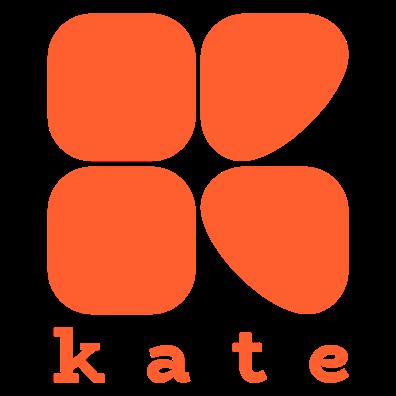

HAS ANNOUNCED A FUNDRAISING ROUND OF €7 MILLION TO DELIVER THE FIRST OF ITS RANGE OF CARS, THE ORIGINAL, AND TO FUND THE DEVELOPMENT OF ITS K1 MICRO-CAR.

ounded in 2022 by Thibaud Elzière, Matthias Goldenberg and Pierre Escrieut, Kate is a French company which produces light electric micro-cars to meet today’s challenges in terms of sustainable and responsible mobility.
In Europe today, drivers heading from A to B use larger vehicles — like a regular car — for 84 per cent of their trips. These journeys represent 11 per cent of CO2 emissions and yet 98 per cent of trips are shorter than 50 miles (80 kilometres).
The key takeaway is that the capacities of our cars exceed the demands from most of our short errands and daily vehicle
use. Kate is paving a new way for everyday cars, a way back to simplicity where low maintenance meets high-end sustainability.

Kate champions the idea of light four-wheeled vehicles which are suitable for transporting goods and people to meet the energy
and environmental challenges of everyday life. Kate’s founders are inspired by “Kei Cars,” the micro-cars which were originally developed in Japan in the 1950s and are highly regarded today for their practicality and affordability.

“We are confident that twotonne SUVs, whether they have an internal combustion engine

“We are confident that two-tonne SUVs, whether have an internal combustion engine or are even are not the future of everyday mobility”
Matthias Goldenberg, Kate’s CEO and co-founder
whether they even electric,
or are even electric, are not the future of everyday mobility,”
“Used for everyday journeys, tomorrow’s car will be light, clean and energy-efficient and will offer equal protection for drivers, passengers and other road users. It will ensure the decarbonisation of the automotive industry but its
success will be guaranteed by the fact that it will be less expensive to buy, produce, use and maintain than a traditional car.”
The first deliveries of an iconic car: the Original
Creating an entirely new car manufacturer from scratch is not as simple as it sounds, which is why Kate isn’t strictly a ‘new’ company.

In 2022, Thibaud Elzière invested in a French company called NoSmoke that produced electric vehicles inspired by the Mini Moke. Kate then acquired NoSmoke outright to repurpose some of the company’s work on a new type of vehicle.

“The acquisition of NoSmoke provides Kate with industrial infrastructure and sector-specific expertise which will give the company a decisive edge within an industry experiencing rapid development. It also provides Kate with a revenue stream that can partially fund future developments,” says Thibaud Elzière.
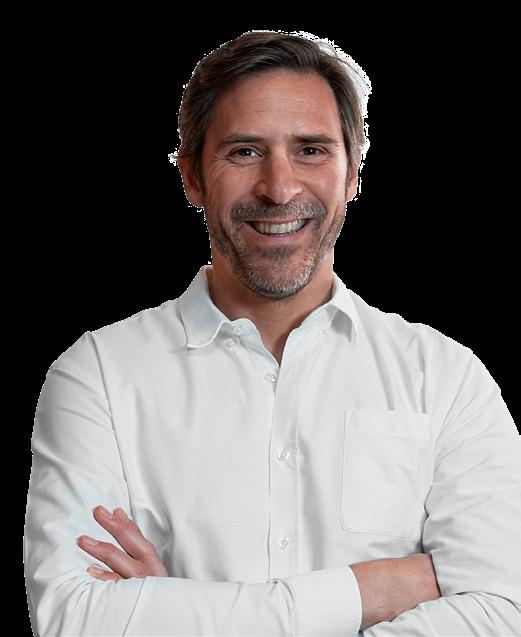
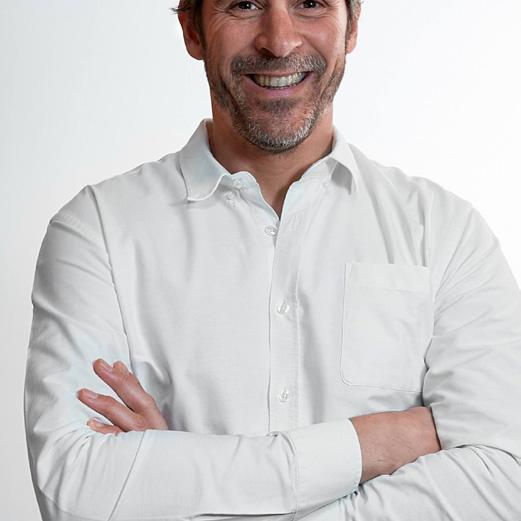
But rather than just producing a leisure car drivers might park next to their beach house, Kate wants to create a mass-market vehicle.
Kate recently launched the Original, a new and improved version of the NoSmoke. Available in 14 colours, it has a range of 62 to 124 miles (100200 kilometres). Customers can now order the Original online on the company’s website.
Thanks to the company’s efficient production in France, Kate has already delivered its first cars after just 3 months.
“The acquisition of Kate with industrial sector-specific expertise”
Thibaud Elzière, Kate’s Co-founder

of NoSmoke provides industrial infrastructure and expertise”
Co-founder
“Our goal is that we should produce four times more vehicles every year. In five years, we will jump from 200 vehicles per year to 200 vehicles per day”
Fundraising of €7 million for the K1’s development Kate has raised €7 million in seed funding from investors involved in the tech and automotive industries, including Julien Lemoine (CTO/founder of Algolia and race car driver), Emmanuelle Brizay (AC8 INVEST), Christophe Maurissen (Managing Director Alcogroup), Romain Afflelou (CEO Cosmo Connected), Benoît CharlesLavauzelle (CEO Theodo) and Antoine Leconte (Founder Cheerz).
The money raised will be used to pursue the research and development of its new micro-car, the K1.
“Designed for the realities of modern living, this light electric car can transport up to 4 people, making it perfect for everyday journeys, shopping and commuting – whether in the city or the countryside. With its modern design and exceptional performance, the K1 is destined to become one of the most iconic cars of our time,” says Matthias.

With many new electric vehicles often costing between €40,000 and €50,000, the initial investment might be too steep for the average driver in the market for a newer, more sustainable mode of transportation.
But Kate’s celebrates the fact that its four-person, four-wheeled, 450kg K1 will debut at a price of just €15,000. Where next?
In 2022, NoSmoke/Kate produced
nearly 200 vehicles. This year, the company is updating NoSmoke’s car and calling it the Kate Original.

“Our goal is that we should produce four times more vehicles every year. In five years, we will jump from 200 vehicles per year to 200 vehicles per day,” Goldenberg says.
Kate intends to introduce the K1 in Q3 2023 and start selling it in 2024.
Will Kate’s tiny cars be the vehicles of the future? Watch this space.
In the wake of a major integration, Emmanuelle Cameau, Strategic Technology Partnership Leader for Gene Therapy at Cytiva divulges how the company is transforming the gene therapy field.




oining forces forged an even stronger global provider of services and technologies that focuses on advancing and accelerating the development, manufacture and delivery of therapeutics. With a wealth of technical expertise and talent, a broad and deep portfolio, and exceptional service, Cytiva helps researchers and biopharma advance therapeutics at every stage: from discovery to delivery. The company is now even better positioned to serve its customers as one
standalone operating company in the Danaher Corporation.
Here to tell us more about how Cytiva is wielding technology, analytics and strategic partnerships to serve patients and advance the gene therapy field is Emmanuelle Cameau, Strategic Technology Partnership Leader for Gene Therapy, part of the Genomic Medicine Chief Scientific Office team at Cytiva.
Emmanuelle’s role involves wearing many
hats. She is a thought leader in gene therapy and works closely on the content distributed by Cytiva related to the field. This extends to a commercial role, where Emmanuelle consults with customers about the various solutions and products offered by Cytiva. Lastly, Emmanuelle supports the marketing and R&D departments because she regularly engages with C-suite executives and researchers, so she understands their needs or challenges, which she then feeds
back into Cytiva’s development strategies so the company can serve current and prospective clients even better.
In addition, Emmanuelle embraces the opportunity to be involved in industry groups, such as the BioProcess Systems Alliance’s Cell and Gene Therapy committee, the International Society for Cell & Gene Therapy’s Process Development and Manufacturing ERM (Emergent Regenerative Medicine) committee, and the

Bespoke Gene Therapy Consortium, representing Danaher in the manufacturing sub-team.
How can the industry utilise technology to drive down the COGS to better serve the patients?

This is one of the emerging topics in the gene therapy field that features prominently in Emmanuelle's work.
“Lately, there have been some great approvals of gene therapy drugs,” Emmanuelle says. “For instance
the latest has been Hemgenix, coming in at a record cost of $3.5 million per dose.”
While this may seem expensive for a single-dose treatment, Emmanuelle explains that when you balance this against the total costs of treatment or courses of therapy this will replace – which can cost closer to $20 million – it is actually an affordable advancement.
But Emmanuelle identifies that the problem is even though these treatments might be cheaper in the long run, they are still too expensive for public providers or healthcare systems to absorb in practice if they were rolled out to all the people needing these solutions.
However, by focusing on the R&D, manufacturing and quality control processes, particularly by
“LATELY, THERE HAVE BEEN SOME GREAT APPROVALS OF GENE THERAPY DRUGS”
leveraging new technologies and refined operational procedures, Emmanuelle insists that solutions providers like Cytiva can help the industry drive down the total COGS.
“There was a recent webinar by Clare Blue at Biogen where she states that only 2 per cent of the products manufactured actually goes to a patient because the rest is used for quality control, stability studies, etc,” says Emmanuelle. “So there's clearly some improvement that needs to be made on the quality control assets and methodology to try to reduce the number of samples that are needed at each step so that we still keep the safety and the controls that are needed but with a lower quantity of samples.
“When I’ve talked to some key opinion leaders, I’ve asked how much we need to decrease the cost to get it more affordable and most people align on the fact that we need to be in a factor between 10 and 100 times cheaper.
“Within the manufacturing process, for example, if you look at the downstream for adeno-associated virus (AAV) vectors, the yield is usually around 25 per cent. This is not a great yield. Some customers have reached 40 per cent but if you take 25 per cent as a worst-case scenario, it becomes clear that a yield in the downstream of 100
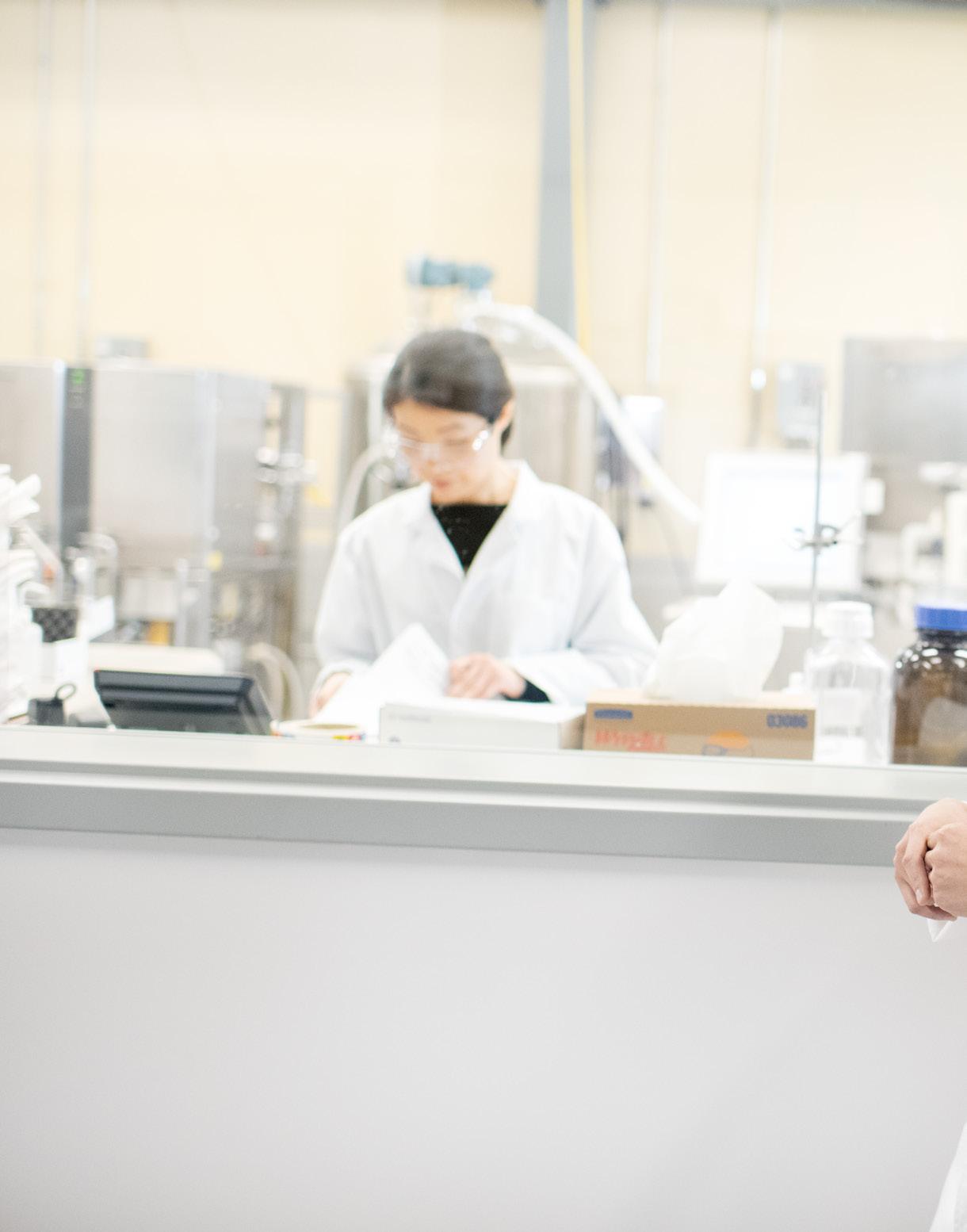
“WE INTERACT WITH POLYPLUS IN COLLABORATION, FOR INSTANCE WHEN WE USE THEIR TRANSFECTION REAGENTS TO GENERATE MATERIAL OR DO EXPERIMENTS THAT HELP US TOWARDS OUR THOUGHT LEADERSHIP WORK”
per cent is not realistic. But say we strove towards 80-90 per cent. It means that from 25 per cent you are increasing the yield (and therefore reducing the costs) by about three times – so with all the improvements we cannot reach the 10-100 times improvement I mentioned earlier by key thinkers needed to make therapies affordable and realistic.
“So the answer is to look at the upstream side, that is where the big levers are. So these might include improvements around the transient or transfection process, it's around getting better transient transfection reagents, better cell lines that

are higher producers and better plasmids because we know plasmid quality also has an impact on the productivity and quality of results.
“Last year Cytiva acquired CEVEC, which is a company that has developed the only real stable cell line on the market. Stable cell lines will probably coexist with transient transfection because they make a lot of sense in the development of large indication therapies, high dose therapies, but not so much when it's just a very low dose, low indication say if we have to do a 50-litre batch every year.
“It's not only a question of higher productivity. So for viral vectors and specifically for AAV it’s about finding ways to increase the full/empty ratio. Right now we have processes that have 20 per cent full/empty ratios or more, and some processes have 2 per cent full. But if we were able to get the same productivity, so not even getting better, but get more full AAV particles, we would be making important progress.”
“Cells are living organisms so it’s very often a black box and we don't completely understand what happens in viral vector manufacturing. We need more consistency and a better

Gene Therapy innovators must deal with constant pressure to get their product(s) to the clinic as fast as possible. In this aspect, the speed and flexibility of transient transfection of plasmid DNA to generate functional recombinant AdenoAssociated Virus (AAV) particles are cutting edge advantages over other techniques such as stable cell line generation. Despite being widely used, triple transfection has often been overlooked and labelled as “challenging”. While timing is key in an ultra-competitive market, a growing number of companies realise the importance of establishing robust and highly optimised manufacturing bioprocesses to produce enough potent viral particles. Approximatively 1:100,000 assembled AAV capsids will display the desired clinical output in humans (1) emphasising the fact that viral manufacturers must invest resources to build efficient AAV vector production platforms. And this goal can only be reached by having a robust and consistent plasmid DNA delivery method in place in the upstream process. Allocating proper resources to finetune triple transfection can have a huge positive outcome on the amount of functional viral particles produced.
The path to successfully reach clinical and commercial stages largely depends on the Process Development (PD) efforts deployed for AAV manufacturing, whether you outsource them to a Contract Development and Manufacturing Organisation (CDMO) or perform them in-house. The triple aim of such PD activities consists in:
With highest viral particle functionality

Using an economically viable manufacturing process.
To reach this simply put yet ambitious goal, innovators need to develop a consistent and reproducible process. Plasmid DNA delivery is at the core of success since setting up a robust triple transfection step is often considered as the main challenge of upstream bioprocessing. Thus, it is critical to determine the best set of conditions for each specific AAV manufacturing workflow. There are many factors impacting the output of plasmid DNA delivery experiments to produce AAV vectors (Figure 1).
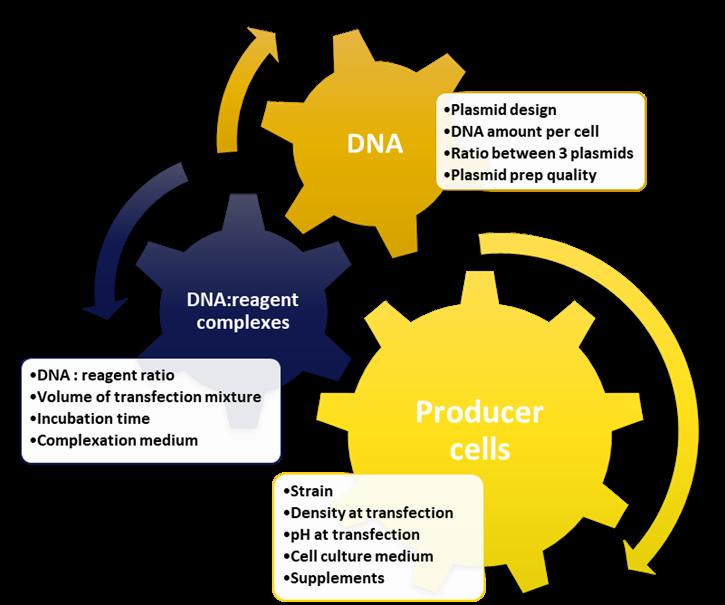
Each variable should be carefully studied during PD to identify the best performing transfection conditions and finetune the design space to operate in to target appropriate Critical Quality Attributes (CQA) of the process. Until now, most of the work done to improve rAAV production in the field often relied on optimising a single factor at a time. However, this approach is no longer favored because of (1) the multiplicity of factors contributing to rAAV generation, and (2) how these variables can interact. Design of Experiments (DOE) is now widely used to tackle this complexity by enabling to optimise each factor and ultimately determine a unique set of parameters for each specific viral vector manufacturing process. DOE approach allows to screen and optimise many factors, but you first need to identify and rank your drivers to draw clear experiments objectives as optimal transfection parameters cannot be determined in one single experiment.
Also, best performing transfection conditions for one serotype are not necessarily optimal for another – even when producing two different vectors using an identical tissue culture system. This really underlines that spending resources in early stage to tweak the workflow is key. Sometimes less is more. For example, when using the appropriate transfection reagent and conditions, reducing the total DNA amount can improve cell viability and increase overall rAAV particles quality for optimal potency in vivo without compromising on productivity.
Thereby focusing on VG titer alone might lead to back-andforth optimisation between USP and DSP because of poor quality viral particles. You cannot spread yourself too thin when you want to quickly get your product into the clinic. Each PD experiment matters, we will never say it enough: transfection conditions and cultivation parameters need to be optimised for each unique rAAV vector and cell culture setup. And Polyplus offers everything needed to do so.
Appropriate outputs are required to characterise any manufacturing process such as the physical titer expressed as Viral Genomes (VG) per mL of crude harvest. This readout is universally used for rAAV vector titration. VG copies are measured by quantitative PCR (qPCR) or droplet digital PCR (ddPCR), both techniques allowing to screen and select best performing experimental conditions in a sensible timeframe. While relatively quick and easy to determine, the physical titer is not always directly correlated with the final potency and quality of the recombinant vector produced. Thus, even if reaching the highest physical titer remains of primary importance when conducting upstream PD activities, the number of VG produced should not be used as sole criterion to cement best performing transfection conditions moving forward. Assessing functionality of produced viral particles is critical to align both UpStream Processes (USP) and DownStream Processes (DSP) objectives when developing a novel rAAV production platform. In this way, quantifying the proportion of full particles in the crude harvest while measuring their infectivity is required to confirm that the rAAV production method can consistently produce enough potent vector. Infectivity or functionality is usually determined with an in vitro assay using the closest cell type possible to the one targeted in the clinical application (2).

For many years now, PEIpro® is the leading DNA transfection reagent used in viral vector manufacturing processes for Gene & Cell Therapy products. PEIpro® has proven its efficiency, robustness and scalability in large-scale manufacturing of preclinical and clinical batches of rAAV. Abeona Therapeutics exemplified these characteristics by demonstrating the scalability of their transfection-based production process from 50 L to 500 L stirred tank bioreactor3. However, 500 L scale is just the beginning. To keep increasing productivity while easing the scale-up of bioprocesses to even larger bioreactors, Polyplus launched the new generation reagent FectoVIR®-AAV to revolutionise transfection-based rAAV manufacturing platforms: more titer, more flexibility, more scalability, more of everything can be expected when using FectoVIR®-AAV for your rAAV transfection process in suspension cells. Optimising transfection parameters with FectoVIR®-AAV based on a DOE approach can lead to unmatched yield improvements compared to standard triple transfection experiments using commercially available PEI. By combining LogicBio Therapeutics proprietary plasmid technology, Exothera's scale-up capabilities with our FectoVIR®-AAV reagent that ensures scalability of transient transfection, we recently demonstrated consistent high rAAV-8 titer yield, irrespective of scale from shake flask to 2000L scale bioreactor using Pall corporation Allegro STR system.

Polyplus’ unique transfection technologies supports continuous PD efforts deployed by viral vector innovators to make AAV manufacture affordable. Superior reagents such as FectoVIR®-AAV combined with DOE is most probably the best approach to optimise triple transfection experiments and in fine unlock the potential of each specific viral vector manufacturing process. All of this to ensure that each scientist successfully optimises their viral vector production process to ultimately bring Gene and Cell Therapies to market faster.

understanding of the cells and to find levers around higher productivity but also higher full/ empty ratios.”
How is the company deploying analytics technology development to assist viral vector manufacturing?
At Cytiva there are development and innovation projects underway to improve the use of analytics to bring solutions to viral vector manufacturers. But one of the perks of being part of such a large corporation as
Danaher is that Cytiva can benefit from the wealth of expertise and knowledge across its parent company’s entire portfolio.
For instance, there are companies like Beckman Coulter and Sciex that are dedicated, high-tech analytical providers.
“The big gap or question around this topic is that, currently, we don’t have many tools available to characterise and measure the ways we can improve viral vector manufacturing,” explains Emmanuelle. “For example, when
We understand the barriers holding drug developers and manufacturers back from achieving the potential of their products and services.
Viral medicines face fundamental manufacturing and therapeutic challenges due to cellular antiviral defenses.
Our proprietary Viral Sensitizers (VSE™) unlock your potential to increase yield and effectiveness. Virica is the first company to develop and commercialize VSEs to solve the real-world challenges in delivering the promise of critical viral medicines.


we undertake what we call polishing steps or full/empty separation, we do not necessarily have the tools to differentiate one species from the other in a systematic way. And this is the next step for us as technology developers together with the drug developers – we are looking to build the tools to understand how our products help purify and separate these different species to go a bit deeper than just focusing on the full/ empty ratio alone.”
opportunity to forge strategic tech relationships with the goal of facilitating innovation and furthering the cell and gene therapy fields.
One of Emmanuelle’s roles at Cytiva is to set up collaborations to generate data together.
She highlights Cytiva’s ongoing collaboration with Virica Biotech.
How does Cytiva forge strategic tech relationships and facilitate innovation to further cell and gene therapy?
On the topic of building new tools, technologies and solutions, Emmanuelle highlights the importance of collaboration with innovative start-ups that are addressing some of the pressing challenges in the gene therapy sector.
But beyond collaboration with start-ups, Cytiva embraces the
“Virica produces viral sensitisers (VSEs) and they had some data on using VSEs to increase the productivity of viral vectors,” says Emmanuelle. “So we set up a collaboration with them to test their technology on human embryonic kidney cell line producing AAV 8. The goal is to see if VSEs drive productivity in a dynamic system not just flatware. We are also looking to see if they can improve full/empty as that’s the big lever but also see how they are cleared through the
“WE SET UP A COLLABORATION WITH VIRICA TO TEST THEIR TECHNOLOGY ON HUMAN EMBRYONIC KIDNEY CELL LINE PRODUCING AAV 8. THE GOAL IS TO SEE IF VSES DRIVE PRODUCTIVITY IN A DYNAMIC SYSTEM NOT JUST FLATWARE”
downstream as it’s a concern to potential customers.”
But Cytiva not only forges relationships to gather data, but to scale its operations as well.
Here Emmanuelle lauds Cytiva’s collaboration with Andelyn Biosciences, a contract development manufacturing organisation (CDMO).
“Andelyn is equipped with the relevant equipment from Cytiva’s, and we have a process development service – a fee-based offering from three labs in the UK, USA and Asia. We have worked with Andelyn on helping them scale up their upstream and downstream process, including process improvements that can make a difference at a large scale. It was a mutually beneficial collaboration

“WE HAVE WORKED WITH ANDELYN ON HELPING THEM SCALE UP THEIR UPSTREAM AND DOWNSTREAM PROCESS, INCLUDING PROCESS IMPROVEMENTS THAT CAN MAKE A DIFFERENCE AT A LARGE SCALE. IT WAS A MUTUALLY BENEFICIAL COLLABORATION”
Andelyn Biosciences is a Cell and Gene Therapy CDMO with 20+ years of experience manufacturing Advanced Therapies from its origins at Nationwide Children’s Hospital.


Driven by our mission of bringing more treatments to more patients, Andelyn offers a platform approach for suspension and adherent manufacturing that provides value based on three key cornerstones:
• High yielding, scalable and high percentage of full capsids drives manufacturing costs down coupled with improved safety profile
• Assurance of program success through process experience and a track record of reproducibility and operational efficiencies
• Reduced upfront investment in Process Development Activities
• No Cell line licensing fees for manufacturing until BLA
• Continuous carrying of cells – no MCB/WCB manufacturing upfront costs

• Fully integrated CDMO from MCB/WCB generation to plasmid manufacturing, vector production and extensive in-house analytical capabilities
• Well-characterised platform reduces process development and analytical development activities scope and timelines
• Ph1 to Commercial occurs in same site with no need for tech transfer
• Platform approach drives seamless transfer from Pre-Clinical to Commercial through process harmonization
• Nimble and scalable capacity to 2,000L
Scale
Maintaining Titer across multiple scales

because some of the work they did on the design of experiments and optimisation of their processes have transferred to us and we then scaled that up even further.”

As with any company, supplier relationships are key and here Emmanuelle discusses Cytiva’s close relationship with Polyplus – a leading upstream solutions provider that supplies Cytiva with transfection reagents and plasmids.
“We interact with Polyplus in collaboration, for instance when we use their transfection reagents to generate material or do experiments that help us towards our thought leadership work. We also engage with each other to support shared customers and to generate joint thought leadership content.”
What are some of the main opportunities or obstacles in the gene therapy industry and how is Cytiva leaning into them?
Emmanuelle describes the sheer volume of drugs that are in the clinical and late-stage clinical phase right now.
“We have shown we can make viral vectors and get them approved by the regulatory bodies and balance safety with efficacy,” explains Emmanuelle. “But they are still very expensive. So now we have to manufacture them with better, newer tools using analytics to make this process more efficient and better predict when we are developing a process to reduce the R&D costs that go into the therapy cost, so the therapies go into the clinic faster.
“There are some cases where therapies can be fast-tracked if the indications are incurable and depending on the country. But we need to be working together with the regulatory bodies so they can keep up with our new solutions. We now have all these different tools amongst mRNA, saRNA, viral vectors, cell therapy, gene-modified cell therapy, oligonucleotides etc, that form what we could call a scientific toolbox. But now scientists have to figure out what is the best tool for what problem, to cure specific diseases. This will be
a revolution because it will allow us to develop the best drugs or therapies for the specific diseases, optimally and effectively.”
What are the principal ambitions and growth plans at Cytiva in 2023 and beyond?
The ambition at Cytiva is to be the biggest supplier in the biotech industry, specifically within the genomic medicine industry.
With the combined Pall Life Sciences and Cytiva portfolio, Emmanuelle says, “We can really answer the customer needs from the early stage of the process to the final stage of the process for delivering therapeutics, regardless of scale, including process automation and/or single-use products.
“Our goal is to continue building on this prominent position while helping and advancing medicine – it’s our core driver to bring these lifesaving and life-improving therapies to people around the world.”
For more information about Cytiva, visit cytiva.com.
Emmanuelle is thrilled about the recent integration of Pall Life Sciences and Cytiva.
“We’ve been working on this for years and it’s finally here and I can hardly believe the day has come to pass. But we believe it was the right thing to do and it’s pointing us in the right direction to help our customers and advance genomic medicines.”
Emmanuelle has her fingers crossed that she will be presenting Cytiva’s collaborative work with Virica towards the end of the year in Dublin at the Cell and Gene Therapy Manufacturing & Commercialization Europe conference.
She also invites readers to attend her Cytiva Live 30 webinar on June 13, 2023.
Relishing the chance to advance medicine, Emmanuelle embraces opportunities for collaboration and continuing her work with industry thought leaders to give back to the world, an endeavour she finds incredibly motivating and inspirational.
 Connect with Emmanuelle
Connect with Emmanuelle

echnology keeps growing at a fast pace, providing us with innovative platforms, apps, services and tools designed to help us deal with daily chores or pressing duties in a smarter, more efficient manner.
The UK’s tech sector, in particular, is paving the way as Europe’s leading ecosystem.
During 2022 alone, British tech companies have developed at
near-record levels (£24 billion), which is more than France’s and Germany’s growth combined – £11.8 billion and £9.1 billion, respectively.
Here we explore some of the country’s most exciting growth tech companies in 2023 – all were included in the 2023 Northern Tech Awards top 100 shortlist, celebrating the tech industry in the north of the UK.



Airtime Rewards is a forward-thinking business that uses real-time purchase data, as well as AI and machine learning technology, to understand why and how people shop. Based on this information, its costfree app presents customers with the right level of reward, at the right time.
Specifically, Airtime Rewards enables people to earn benefits for their purchases. To do so, it uses a special type of reward currency that can be turned into monetary credit on a shopper’s smartphone account. It can also be converted into credit for additional mobile data.
Airtime Rewards has agreements with the major mobile network companies in the UK, including EE, Vodafone, O2 and has a strategic partner in Telefonica.


Launched in 2011, AppLearn solves the issue of inefficient use of software applications across businesses.

AppLearn’s digital adoption platform provides users step-bystep guidance, pop-up info and side-panel resources. It is built to help people navigate their company’s software in an easier, more straightforward way, cutting wasted time, costs and frustration.
Those using AppLearn’s technology are likely to complete tasks more accurately and 50 per cent faster, which is why the platform is adopted by market-leading companies in over 100 countries.
iAM Compliant formally entered the market in 2019 and has been growing steadily ever since.
This Chester-based tech company has designed a web-based compliance tool for the education sector, assisting with the everyday management of school health and safety, staff training and statutory reporting.

It also contains a comprehensive online-learning library that corporate customers widely use to train their employees too. Currently, the corporate training market is worth about $200 billion (£161 billion) and is likely to expand as lifelong learning becomes an essential prerogative in people’s careers.


Operating in a variety of sectors across 160 countries and supporting over 100 million daily transactions, ProofID is an award-winning market leader in digital identity.
Thanks to its solid partnership with Ping Identity, a world-known corporation offering identity and access management (IAM) services, ProofID benefits from the latest, most innovative technology on the scene.
This fast-growing business acts as a key enabler in many aspects of cybersecurity, such as the implementation of a zero-trust strategy. This way, it helps customers improve their cyberthreat defence and ensure a better customer experience overall.
In 2022, UK-registered cyber-security companies generated a total of £10.1 billion in revenue.

Orka Technology Group is an exciting business that offers a seamless platform for job seekers and employers operating in the private security industry.
The private security sector is a £5bn marketplace that comes with a high turnover percentage. In turn, this makes for an expensive recruitment procedure, as anyone new to the industry is required to go through an in-depth vetting process before they can take on the role.
Orka Technology Group’s platform, however, allows candidates and recruiters to find each other and chat about available jobs while offering a fully compliant vetting procedure that is quicker and more cost-effective for both sides.


Finding fertile land in the world of sales and marketing, Automated Analytics has developed an ingenious platform called eSalesHub that addresses the gap between online clicks and offline conversions.
The data between online clicks and offline conversions has historically been challenging to quantify. But Automated Analytics’ handy tool allows marketing businesses to bridge the gap, helping drive forward stronger campaigns and nurture better relationships with clients.


Another exciting growth tech company is MirrorWeb, a data-archiving business that allows organisations to capture records of digital communications and content. This includes info for regulatory compliance and dynamic content pulled from websites, social media platforms, emails and instant messaging.
With the help of MirrorWeb’s tech platform, firms can reduce costs by cutting back on manual processes and storing all records in a format that can be accessed instantly as needed.

The tool already supports a wide range of firms across the private and public sectors, such as Tesco Bank, Zurich Insurance Group, the UK Parliament and the BBC.
Quorum Cyber is another successful firm in the cybersecurity sphere whose future looks fruitful and bright.
Since June 2020, this Edinburgh-based business has grown to become a highly respected centre for talent and innovation in the cyber sector. Its headcount has quadrupled and it has also entered the US market.
Quorum Cyber’s strong partnership with Microsoft means it is renowned internationally as an established player in its industry. What’s more, in recent times, it has capitalised on headline news about high-profile cyber-attacks and data privacy, offering cutting-edge software tools and solutions to protect its customers.
Headquartered in Hull, The 55 Group is an attractive business that makes the most of technology and innovation to deliver faster, greener and more efficient infrastructure.
Specifically, The 55 Group offers effective end-to-end solutions for big enterprises and the public sector, helping them manage demanding construction projects.
It is also worth mentioning that it’s the parent firm for several crossindustry businesses, from national framework provider Pagabo to the digital training platform Tequ.
With the input of affiliated companies, The 55 Group supplies customers with reliable services in what is a large, profitable sector.

With an original and convenient concept at its core, Rockar Tech is an automotive e-commerce business that has designed a platform to facilitate the car-buying experience.
Customers are able to carry out everything they would do through a dealership from their own sofa, including final transactions. The end goal is to give people a comfortable, transparent alternative to the more conventional, lengthy car-buying process.

Rockar Tech is clocking up miles in the e-commerce industry and has already worked with renowned manufacturers such as Ford, Jaguar Land Rover, Hyundai and Mitsubishi.












"The team were professional and diligent throughout"
Leigh Feaviour, CTIO for BT’s Supply Chain
"Absolute pleasure working with the Digital Innovation team"


Mun Valiji, Chief Information Security Officer at Sainsbury’s
"A highly professional approach"
Andy Brierley, Vice President, Cloud Application Modernisation at IBM
"Digital innovation Magazine is a very flexible and professional team"
Kim Larsen CTIO, T-Mobile Netherlands
David Latten,
Head of Global IndirectProcurement at Logitech discusses how he and his team wield procurement strategy as a force for global good.


FOUNDED IN 1981, LOGITECH IS A CONSUMER ELECTRONICS COMPANY THAT MANY PEOPLE MIGHT KNOW FOR THEIR HARDWARE PRODUCTS LIKE COMPUTER MICE AND KEYBOARDS, BUT THE BUSINESS OFFERS FAR MORE THAN OFFICE ACCESSORIES.

ogitech has expanded into the gaming sector and has positioned itself as an industry leader at the final touch point between people and their digital experiences – for instance with video conferencing or meeting room setups.
The company sells products in almost every country in the world and turns over $4.5 billion in annual revenue, but Logitech is a lean enterprise with a comparatively small workforce of 6,000 people.
David Latten, Head of Global Indirect Procurement and
Diversity & Equality, shares insights into how he and his team deploy Logitech’s indirect
procurement strategy as an engine for societal impact, to drive value with external relationships and do more with less.
So how do David and his team approach indirect procurement at Logitech?
David explains that it starts by identifying your purpose as a department.
says David. “Our
procurement
Supplier
“It's always fundamentally important for a department to ask why do we exist, what are we looking to do for the business and what is our wider societal impact too?”
value proposition for the business in

is looking to drive value for Logitech in terms of making sure that we're purchasing things at a very costcompetitive price. That's a huge, obvious competitive advantage and we're doing the same for supplier performance, making sure that the right partners are really performing well for us. There's an element of risk management too. These are the
traditional procurement values we work towards.
“But the other big value driver for us is progressing our core values at Logitech around equality and the environment with our suppliers. Here, what we mean is that we're going to have an impact on this world. We want to make sure that impact is a positive one. We want to make sure that we're finding new solutions so we can progress on those big societal challenges with our external relationships.”
How do David and his team do this at Logitech?
“Our strategic priorities partly come from where in the business we are as a team. If you think about the concept of procurement, it's being able to achieve impact because of the position we have in the business,” says David. “When our team is working at its best, we should know all the challenges and priorities for the years ahead from our internal business partners which is a strong pivot point to those external solutions and the suppliers that are out there. But for this to work, we need the fundamentals of people, processes and tech to collaborate effectively.

“Logitech is a very autonomous company. So in 2023, for procurement to succeed at
David Latten, Head of Global Indirect Procurement at Logitech
“We want to make sure that we're finding new solutions so we can progress on those big societal challenges with our external relationships”
Logitech, and probably all other companies as well, you have to have a really strong answer to this idea of why should the business work with me and my team?

“During my early days in procurement, I almost envied companies that are a bit more traditional where there is a mandate that you must work with procurement for all supplier interactions. But, that's not really us at Logitech and I think my position has changed because now I have the mindset where I wake up every morning thinking why should the business work with us? Every team should be thinking that way.”
So what are some of the goals David and his team are working towards?
“Our priorities for the years ahead are that ultimately our compliant core technology processes for procurement at Logitech need to also be the easiest and quickest way for the business to engage with us,” explains David. “There's such a high level of expectation now when it comes to tech and purchase processes.
“In our private lives, we can buy flights in seconds and we can purchase everything we want from various different commerce sites.
But until very recently B2B technology has lagged a long way behind. If it’s significantly more difficult for people to buy things compliantly at work when they're used to smoother purchasing processes on their personal purchases, the discrepancy can be jarring. So I think we must really set ourselves that high bar of making the compliant corporate purchasing process to also be the easiest and quickest way for the business to select and purchase goods or services from suppliers. But all of that can only get you so far. You need your team to be trusted high-impact business advisors to our partners. That's why procurement exists as a team.”
David observes that procurement priorities are starting to shift as the Covid pandemic and subsequent lockdowns fall further away in the rear-view mirror.
“For the year ahead, I think it's interesting coming out of the post-pandemic world because margin optimisation and savings, two of the traditional procurement value levers, are coming back to the fore. In more recent years we focused on the source of


supply, supplier performance and managing risk. But making savings has now become a huge topic again. The economy is flatlining and making savings has become a huge topic again for procurement again in 2023.
“Supplier diversity continues to be a huge topic for us too,” adds David. “We're trying to work with as many suppliers that are owned, operated and controlled by underrepresented groups. That's always a huge priority for us. We've grown on that front well in the US, but we want to go global with it and we aim to do it with our product-related spend in future which is mostly in Asia.
“We also want to drive our values forward with large shareholder companies. Supply diversity traditionally gravitates around privately owned, smaller businesses. But large companies will always spend more with other big companies. It's a crucial topic for us. If our core values are around that positive impact towards equality and environmental sustainability, we have to find a way of doing that with our largest, most strategic suppliers.
“Lastly, technology cuts across all our value drivers and priorities. The business won't engage with us and
our lean team cannot provide value to Logitech without a great tech experience. We're a team of 15 people working with hundreds of people across the business whilst managing thousands of suppliers. Technology is the only way we can perform in a scalable way with our business partners.”
Logitech, as with any company, can exert full control over its own operations in terms of driving sustainability and working towards progressive goals.
However, David admits the reality here is that the internal influence is finite. The concept of ‘procurement with purpose’

addresses Logitech’s drive to elevate the endeavours of their partners and suppliers along the way, where the impact can be limitless.
“With spend comes a huge amount of potential leverage and impact with our suppliers,” says David. “Operating expenditure can be multiple hundreds of millions of spend, up into the billions of spending each year.
“The potential for impact with large companies is enormous. These large companies employ millions of people across the globe and accrue trillions of dollars of revenue. If you can get these businesses to move on globally important topics there is massive potential for societal impact. To my
mind, that is the ultimate aim of procurement with purpose.”
Logitech also challenges its supplier and partners to join them in pursuing progressive societal goals too. As David puts it, partners become allies and these alliances allow companies to make more of an impact together.

One such alliance is the Coalition For Gender Fair Procurement.
“We’ve co-founded the Coalition For Gender Fair Procurement to inspire suppliers to advance
“To support their efforts in promoting gender equality, Logitech works with a women-owned startup called 17ways”

gender equality by leveraging the power of corporate procurement as a lever for change. To provoke this change, in coalition with Gender Fair, Logitech has started assessing their high-impact suppliers for gender fairness using the Gender Fair assessment based on the UN WEPs. The ultimate coalition goal is to engender an industry-wide change in procurement practices whereby all organisations assess all their high-impact suppliers for gender fairness as a matter of course as we do today for risk, privacy, data security etc,” says David. “We won’t get there alone, we need allies. Which is why we co-founded the coalition with Gender Fair and a number of founding allies like Andela and Zoetis.”
To support their efforts in promoting gender equality, Logitech works with a womenowned startup called 17ways which has helped the company direct spending to positively impact businesses and allowed Logitech to start reporting on the societal impact of some of their suppliers.
David reiterates the importance of technology for promoting procurement with purpose. When large global companies connect through supplier relationships or partnerships, the network as
a whole becomes incalculably extensive. In order to create an impact in such a vast system, the tech solutions used to promote procurement with purpose need to be innovative and impactful.
Logitech has made tremendous progress in its procurement technology over the last decade, and David explains that for his team it was a pivot towards technology that allowed his lean team to offer more value to the wider business.
“We ask ourselves two simple questions when it comes to technology,” David says. “Can it empower our own procurement team to do a better job – for instance, undertake projects with bigger impacts and do them quicker? And secondly, can any technology we work with remove any barriers to the business engaging with procurement and

“We won’t get there alone, we need allies. Which is why we cofounded the coalition with Gender Fair and a number of founding allies like Andela”
make it easier for them to do the right thing?”
So where will Logitech grow in the coming years?

David identifies four key trends that will become increasingly important at the company:
1. The rise of e-sports
“E-sports are becoming one of the largest spectator sports in the world and it’s only going to explode in the years ahead,” predicts David. “Logitech are very well placed with that trend because we’ve been there for a number of years.”
2. Video everywhere
“During the pandemic everyone wondered how long it would take to adapt to a virtual lifestyle,” says David. “With some exceptions it took most companies no more than a few days. But this was already a trend we were working on and will only continue to grow in the future.”
3. Learning and working anywhere
Connected to the video everywhere trend is the shift towards hybrid learning and working, explains David. “Where we learn and work will increasingly spread from outside the office or classroom. But for the people that return to these physical spaces, there’s an
opportunity because a lot of working environments aren’t designed, optimised or equipped for hybrid working.”
David sees a shift in the distribution of content away from large media companies towards user-generated content streamed by millions of
David highly recommends The Art of Captaincy: What Sport Teaches Us About Leadership by former England cricket captain Mike Brearley.
“Mike Brearley wasn’t the best player in that team, which had Ian Botham and other great players in it – he was one of the weaker players on paper, but he was captain,” says David.
“Brearley was essential to the team and what he was brilliant at was getting the most out of some quite powerful, difficult characters in some cases. So he’s a really interesting character who has written an excellent book on leadership that you can easily relate to your career.”
people around the world. “At Logitech we offer the right hardware and some exciting software solutions around empowering those streamers and creators as well,” summarises David.
For more information about Logitech, visit their website logitech.com.
If you have a spare few minutes, David recommends watching Derek Sivers’ TED Talk ‘How to Start a Movement.’
“In the talk, there’s footage showing one guy in a park doing a crazy dance and by the end of it, everyone is joining in. It highlights that it isn’t the first person who matters, it’s the first allies who are important. The video was really powerful for me on the importance of allyship when trying to start movements.”
David is thrilled to be attending the National Minority Supplier Development Council (NMSDC)
Annual Conference in Baltimore, USA from October 22-25, 2023.
Connect with David







A global technology recruitment specialist believes tech companies can address the sector’s skill shortages by hiring older employees.


he call comes at a time when the UK Government has recently backed an initiative that aims to help parents and carers return to careers within STEM, with financial incentives on offer to encourage them to return to work.
In light of this, Lorien, part of Impellam Group, has urged more tech employers to consider the senior generations in order to tackle the crisis of skills within the wider industry.

Since the start of the pandemic, those aged 50 and above have been more likely to be made redundant, and less likely to be re-employed. More than a third of workers in this bracket believe they have been disadvantaged at work because of their age and more than half believe their age meant they were less likely to receive job offers.
Lorien has advised that, while technological
Technology firms should look to embrace the skills of over 50-year-olds if they are to tackle skills shortages within the sector. That’s according to global technology recruitment specialist, Lorien.
competencies evolve, softer, interpersonal skills are evergreen, and more tech firms could leverage these values in order to tackle the industry’s talent shortages.

Darren Topping, Director of Solutions & Insight at Lorien, says, “With many firms still struggling to find the right skills in the market post the peak in demand in 2021/2022 – and also failing to retain
staff on a significant scale –it’s very surprising to see so few organisations actively target professionals from older generations.”
Elaborating on the benefits of hiring older generations, Darren continues, “The over 50’s have a lot to offer firms. The communication, leadership and cooperative skills that many could bring to the table would help
“The communication, leadership and cooperative skills that
could bring to
would help employers to tackle the
currently
employers to tackle the talent shortages they’re currently facing. Age discrimination is, unfortunately, still a problem and with so much focus being
channelled into ensuring firms can recruit the Gen-Z skills they need, far too few are looking to the more senior end of the workforce.”

many
the table
talent shortages they’re
facing”
Darren explains that there is a large pool of talent who left the technology sector and might be looking to return to work.
“We know from our networks that numerous professionals who left the industry over the last few years – for a variety of reasons – are now looking for a way back in, and with retirement ages creeping up it makes logical sense for more employers to take on workers in the over 50’s age range and to benefit from the vast array of skills and experience that they can bring,” says Darren. “With the four-day working week

“Those over 50 have proven they are adaptable in the workplace as tech continues to advance and they continue to embrace it”
and flexible and hybrid working models offered regularly by employers, many benefits that workers in this age bracket desire are already in place, but they’re not necessarily actively promoted to this demographic.

“Those over 50 have proven they are adaptable in the workplace as tech continues to advance and they continue to embrace it,” summarises Darren. “As a case in point, the invention of Google, social media and mobile phones all occurred in their working careers. This ability to learn and adjust in the workplace should not be overlooked, as it’s a vital skill that many of the younger workforces will not possess to such a level. It also assures organisations that older workers could confidently re-skill and assist in helping with the talent shortage.”
Source: BlueSky Public Relations Ltd
A new campaign from Made By Dyslexia and Virgin shows AI being asked to think like famous dyslexic thinkers to try to recreate some of their most incredible accomplishments in culture, arts and technology.
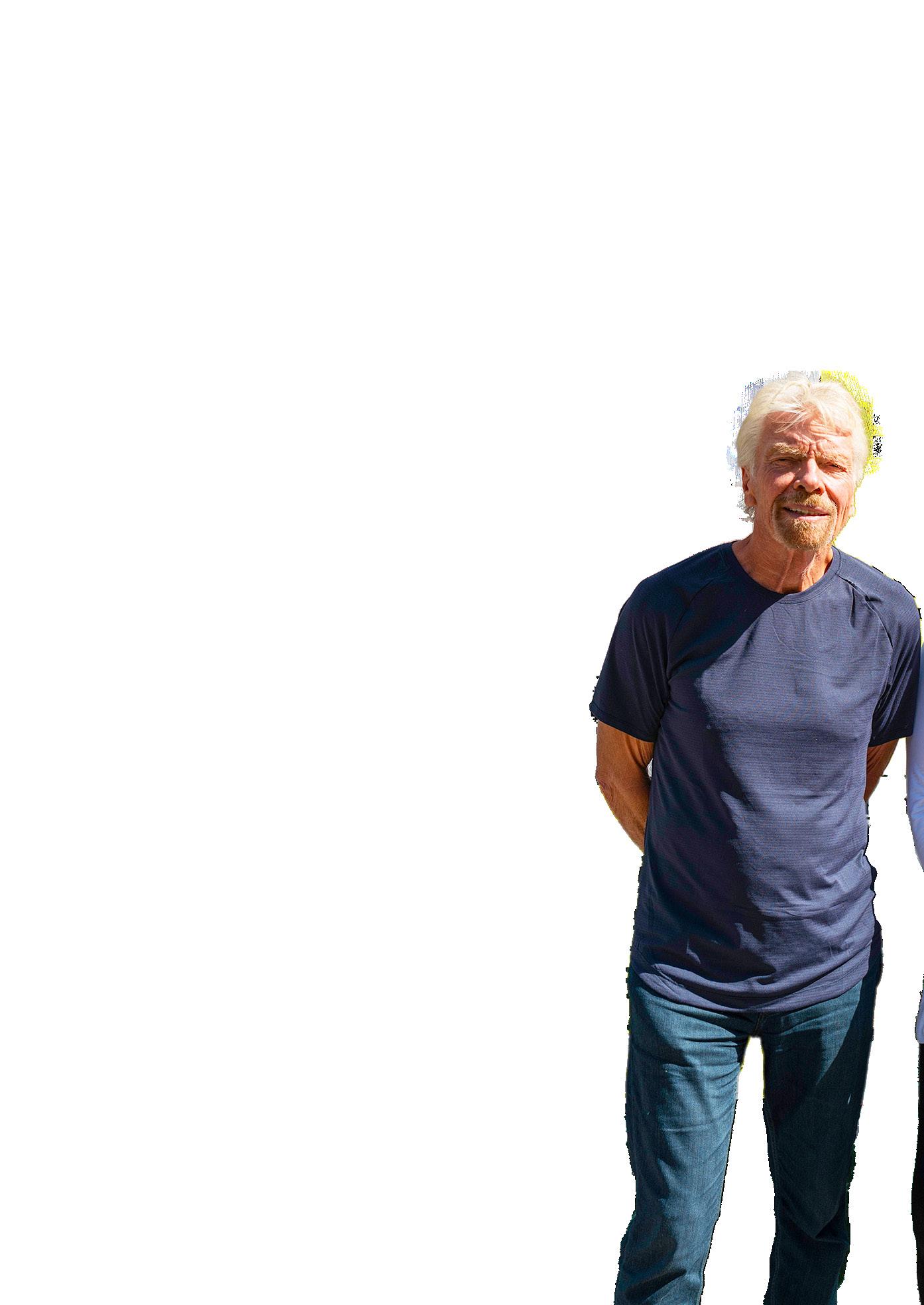


SIR RICHARD BRANSON, VIRGIN, AND GLOBAL CHARITY, MADE BY DYSLEXIA, HAVE ONCE AGAIN JOINED FORCES TO LAUNCH
A NEW CAMPAIGN, DYSLEXAI, AS THEY CALL UPON EVERY WORKPLACE ACROSS THE WORLD TO COMMIT TO EMPOWERING DYSLEXIC THINKING IN THE WORKPLACE.
he rise of AI is truly remarkable. But while it can be a useful tool to move businesses forward, there is another tool out there that can innovate in a way AI can’t: Dyslexic Thinking.
That’s why Sir Richard Branson, Virgin, and Made By Dyslexia have launched a campaign with a film that shows AI being asked to think like
famous Dyslexic Thinkers to try to recreate some of their most incredible accomplishments. The results speak for themselves, producing pieces that, while interesting, don’t display the insight and innovation of the ones created by Dyslexic Thinking.
Whether inventing the car (“Invent a faster horse”) or a certain famous mouse (“Imagine

a cartoon mouse with red shorts and yellow shoes”) – if it was left to computers alone, we could have ended up with something very different.
The film ends with Sir Richard showing that, whilst AI advice on how to scale a record business is accurate and insightful, his more intuitive and entrepreneurial strategy of extending the Virgin Record brand to cover airlines too is not a solution AI could have reached — but a Dyslexic Thinker did.
With a guerrilla-style campaign launch touching both New York and London, including TFL digital and screen takeovers at Virgin Money stores and Virgin Active gyms across the UK, the campaign leads viewers to information about how to empower Dyslexic Thinkers in the workplace.

To support the campaign, Made By Dyslexia released new research in partnership with Randstad Enterprise showing that 72 per cent of dyslexics see AI tools such as ChatGPT as a valuable starting point for them to apply their Dyslexic Thinking and deliver innovative and extraordinary work. This supports the findings of the Value of Dyslexia report, produced by EY and Made By Dyslexia in
2018/19, which found that dyslexic skillsets will mirror the World Economic Forum’s future skills needs by 2025. Given the rapid speed at which technology and AI have taken over –the cross-over has arrived two years earlier than predicted.
Sir Richard Branson, Virgin Group
Founder said, “AI is already transforming the way we work, live and interact. Used in the right way, AI is the perfect co-pilot for people with Dyslexic Thinking skills to move the world forward. But technology can’t replicate the spontaneous, human,

creative instinct that can lead to incredible innovation. Dyslexics have the limitless power to change the world if everyone embraces their dyslexic minds.”
The charity’s forthcoming research with Randstad Enterprise also revealed an alarming discrepancy between how HR departments perceive their own understanding and support of dyslexia in the workplace, versus the experience of dyslexic individuals themselves. While 66 per cent of HR professionals believe they have support structures in place for dyslexia, only 16 per cent of dyslexics feel supported in the workplace. Just 14 per cent of dyslexics believe their workplace understands the benefits and value of Dyslexic Thinking.
Made By Dyslexia’s global mission is to empower Dyslexic Thinking in every workplace because Dyslexic Thinkers have the exact skills that
“DYSLEXICS

can and will move businesses forward now and in the future.
In addition to the DyslexAI campaign, the charity is also calling upon companies to commit to enrol in a brand new, free-to-access workplace training course set to launch on LinkedIn Learning later this year. Designed by experts at Made By Dyslexia, the course will educate on how to understand, support and empower Dyslexic Thinking in the workplace – ensuring that companies are future ready.
A number of organisations including companies across the Virgin Group, Randstad Enterprise and EY have already committed to enrolling all
Sir Richard Branson

people leaders in the course when it launches. Made By Dyslexia is calling on companies across the world to do the same online at madebydyslexia.org.

Kate Griggs, CEO & Founder of Made By Dyslexia comments, “Research has been telling us that
Dyslexic Thinking skills will be vital for future workplaces, and with the rapid advancement and adoption of AI, that future has arrived. Because while technology and AI have evolved to take over many skills, they can't replace sought-after soft skills like innovation, lateral thinking, complex problem solving and interpersonal
skills, which are Dyslexic Thinking skills.
“New research shows that AI is the perfect partner for Dyslexic Thinking, and together they are the unstoppable force every workplace needs to drive their business forward. Our new training will help
every business empower Dyslexic Thinking.”
The latest campaign, again in partnership with agency FCB Inferno, follows the success of the 2022 campaign which saw Sir Richard Branson and Made By Dyslexia collaborate with global partners to


recognise Dyslexic Thinking. It saw the term added as a skill on LinkedIn and as an official term on Dictionary.com. Over 10,000 individuals added the skill to their profile within a week of launch, which continues to grow daily.
Nicole Leverich, Vice President of Communications at LinkedIn comments, “As creative problem-solvers and strong communicators, dyslexic thinkers can give their employers a competitive edge – particularly as AI continues to drive significant changes in the world of work. While many companies are looking beyond the CV basics of past jobs and education to adopting skills-first hiring, there is still a lot more to do.
“That’s why we’re delighted to continue our partnership with Made By Dyslexia to build on the more than 21,000 LinkedIn members who have added Dyslexic Thinking to their profile and help companies embrace the power of thinking differently and support and empower dyslexic individuals in the workplace.”
Source: Made By Dyslexia

AI-driven ultra-personalised health data platform
wiss startup Biolytica is on a mission to make increased human healthspan and performance accessible for everyone by combining personalised longevity programmes and state-of-the-art health data analytics based on the latest scientific and medical breakthroughs.
The healthcare innovator’s ground-breaking Biolytica NEXUS platform offers in-depth insights into the unique health of individual users wielding the power of advanced data and analytics technology.
The Biolytica NEXUS platform brings together and contextualises genomics, pharmacogenomics,
epigenetics, biomarkers, wearable device data, lifestyle and nutrition to allow new insights into human health from a holistic perspective.
The company is transforming how we look at medical data by integrating contextual data, relationships and mental health – changing how we look at the data tied to our well-being.
Biolytica recently secured €5.34 million from Maximon Longevity Co-Investment Fund to fuel growth and the Swiss startup now plans to scale its launch.

 Dr. Robert Konrad Maciejewski, CEO and Founder of Biolytica
Dr. Robert Konrad Maciejewski, CEO and Founder of Biolytica
said, “We are thrilled to have Maximon’s support in our mission to revolutionise how we think about health and prevention in particular. With the investment from Maximon, we aim to establish ourselves as the leading data platform for preventive healthcare and longevity and continue to drive innovation in personalised health and wellness.”
In addition to a B2B platform, Biolytica also offers B2C concierge longevity programmes and health optimisation insights, provided by its team of longevity experts and backed by the platform. These programmes offer personalised guidance and support for clients seeking to optimise their health

and extend their lifespan with a data and science-driven approach.
With this new funding, the healthtech innovators plan to expand their R&D efforts, scale services to a wider client base and collaborate with leading experts and clinics.

We look forward to seeing what lies in store for Biolytica.
Learn more at www.biolytica.com
“Increasing human healthspan and performance through state-of-the-art health data analytics”







